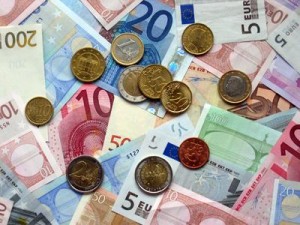 Milk, Fertiliser & Feed Price Index – Feed prices trends positive, Milk prices continue to slideprint. Together with our usual run down of International Milk prices, this month we are also comparing Feed and Fertiliser price trends with the Irish Dairy Board Purchasing Price Index. We hope that this added information will assist farmers planning for the months ahead. There are now just 200 days to go until the abolition of milk quotas.
Milk, Fertiliser & Feed Price Index – Feed prices trends positive, Milk prices continue to slideprint. Together with our usual run down of International Milk prices, this month we are also comparing Feed and Fertiliser price trends with the Irish Dairy Board Purchasing Price Index. We hope that this added information will assist farmers planning for the months ahead. There are now just 200 days to go until the abolition of milk quotas.
Milk Prices
Milk prices continue to show a downward price trend. With the Russian ban on EU dairy products instigated on August 9 we have had a chance to see how European dairy co-ops have reacted in their September milk price announcements. Arla Foods Denmark has dropped its base price by about 1.3¢ per litre. That said, they have been consistently dropping their base price by a similar amount every month since April. Using Irish milk constituents of 3.9% Butterfat and 3.35% protein, Dutch based FrieslandCampina posted a price decline of almost 1.7¢ per litre in September.
Feed prices
Similar to the IDB Index, we have calculated average feed and fertiliser prices, using 2010 as a baseline of 100. In other words, if the Fertiliser Index is showing a value of 1.14, this means that the current fertiliser price in a given month is 114% of the 2010 average price. Record grain harvests are expected in 2014. This is already resulting in cereal price reductions. The latest IFCN World Feed Price Indicator posted a 15% drop in prices in since May. Global cereal prices returns would indicate that there are ample opportunities for Irish dairy farmers to negotiate more competitive feed prices with their compound feed suppliers.
Fertiliser prices
Available CSO prices to June show prices to be holding steady. Globally, Urea prices have been rising in recent weeks on the back of reduced available inventories in the USA, increased demand from Brazil and China, coupled with supply disruptions from Egypt. Reports indicate that prices for September are also higher, but may stabilise before the end of the year when other production comes back on stream.
On a cautious note, two of Ukraine’s largest fertiliser plants are situated in South-Eastern Ukraine where an on-going armed conflict prevails. Ukraine is the world’s fourth largest exporter of ammonia and urea. Figures from the Ukrainian State Statistics agency show production of fertiliser related products is lower for the first seven months of 2014. It should also be noted that one ammonia terminal in the Ukrainian port of Yuzhny serves both Ukrainian and Russian exports. Russia, the world’s second largest ammonia exporter, shipped two-thirds of its ammonia through this port in 2013.
Source: www.agriland.ie

